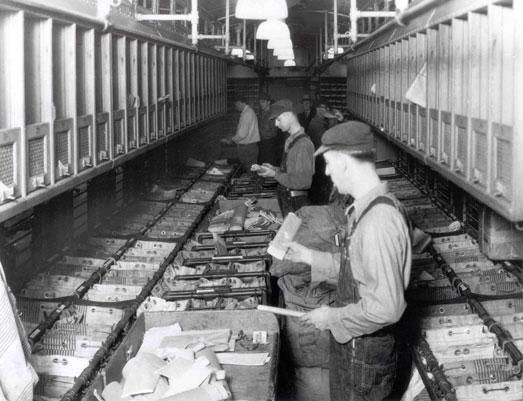Railway Mail Service
For more than a century, the core of America’s postal system was the Railway Mail Service. The system of train lines that crisscrossed the nation carried passengers and mail in and out of large cities and small towns. The Railway Mail Service went a step further in service than passenger trains, providing mail delivery and pick-up to small towns where trains did not even stop. The service relied on partnerships with America’s railway companies and the dedication and efforts of the service’s Railway Post Office clerks. From its beginnings in the midst of the Civil War to its slow decline after World War II and the service’s last run in 1977, the history of America’s Railway Mail Service is one that was central to America’s postal history.
Glossary: Railway Mail Service


















